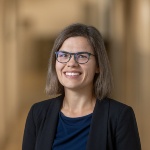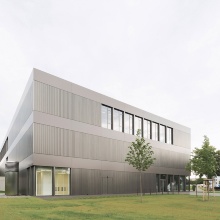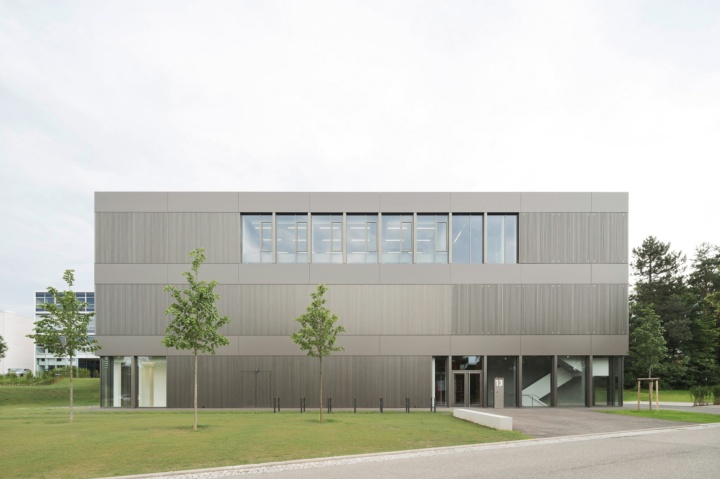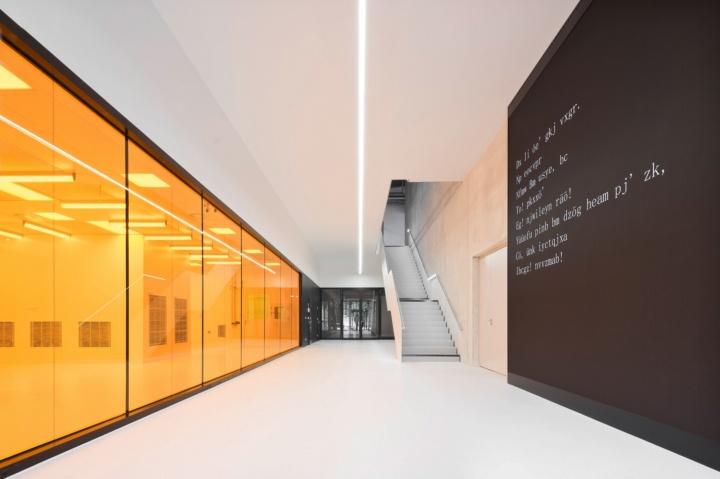At a ceremony held on Friday October 8, State Finance Minister Dr. Danyal Bayaz presented the new building for the Center for Applied Quantum Technology (ZAQuant) at the University of Stuttgart’s Campus Vaihingen, along with State Secretary for Science, Research and the Arts Petra Olschowski and Rector Prof. Wolfram Ressel.
Finance Minister Dr. Danyal Bayaz: “Quantum technology can change our everyday lives, and has an enormous innovation potential for SMEs in particular. This is why we are investing in this cutting-edge research and creating an international beacon for quantum physics at the University of Stuttgart.
State Secretary for Science, Research and the Arts Petra Olschowski: “Quantum science means research for the future, and Stuttgart is just the right place for that. With the ZAQuant, the University of Stuttgart's Campus Vaihingen is being endowed with a research infrastructure which is highly demanding from a technical point of view, and for which practical uses are already being found thanks to the close ties with the Engineering department. Now we have the research space and the large-scale equipment necessary for working together.”
Prof. Wolfram Ressel, Rector at the University of Stuttgart, said that “The new Center for Applied Quantum Technology has a special significance for the strategic focus of the University of Stuttgart on its path to becoming a globally-recognized research university. The interdisciplinary research approach, which is followed by all scientists in this fascinating research building, is the only one of its kind in the world, and will handle the challenges and opportunities of the second quantum revolution successfully and pave the way against global competition for the Stuttgarter Weg (Stuttgart Way) to be employed in technical applications.”
Prof. Jörg Wrachtrup, Head of the Institute of Physics (3) at the University of Stuttgart: “ZAQuant has come just at the right time. With its unique infrastructure, the research building gives researchers at the University of Stuttgart a leading edge in the global competition to research and develop quantum technology.”
The Center for Applied Quantum Technology brings experts in quantum physics and photonics together with engineers to develop applied quantum technology especially for quantum sensors. Quantum technology is a branch of physics, and enables new applications for measuring technology, communications security or highly-complex calculations.
Only infrastructure of its kind in the world – the Physics Magistrale
The development of quantum technology is placing demands on research laboratories which were previously unknown. Environmental influences, e.g. through vibrations or electromagnetic radiation, must be completely eliminated, and preparing materials for quantum technology requires a level of precision which is yet to be achieved. In order to be able to master these challenges, the Center for Applied Quantum Technology has an infrastructure which is the only one of its kind in the world. For it to be possible to research and develop quantum sensors or computers, precision laboratories are required for example which can almost completely eliminate building vibrations, e.g. through intricate construction techniques and the use of special building materials. The ZAQuant is the only building in the world in which the necessary quantum systems can be structured to nanometer precision close to these precision laboratories.
In the immediate vicinity of the ZAQuant are the important partners for putting the research findings into practice, e.g. the Hans-Schickard Society and IMS Chips. It is also worth mentioning in particular that the new Institute of Physics building is also due to be built nearby. The ZAQuant therefore marks the start of the Physics Magistrale.
About the building
Four high-precision measurement boxes form the centerpiece of the research building. They are housed in a three-story warehouse. Clean rooms, laser laboratories, physical, chemical and biochemical laboratories, offices and communications spaces have also been built.
In order to accommodate the highly-sensitive measurement technology which is necessary for research at the nano scale, a high level of precision was required from everybody involved in the building project. The measurement boxes for highly-sensitive experiments were built in such a way that they are shielded from disruptive vibrations and electromagnetic influences. In order to create this space which is completely free of disturbances, a new type of building structure was developed based on the principle of shells lying one inside the other. The sections were decoupled from one another using technically sophisticated structures. The measurement boxes are stored on concrete foundations weighing more than 150 tonnes. These sit on pneumatically controlled air springs with millimeter precision in order to achieve an almost complete vibration isolation. Quantum physics deals with measurements of less than one nanometer. For the purpose of comparison, a single hair is around 50,000 nanometers in thickness.
Passers-by can get a partial insight into the research that goes on inside. The clean room in the foyer, with room-high glazing, can also be seen from the outside as a window into the world of physics. The new building has around 3,000 square meters of floor space. The total building costs of EUR 41.5 million were partially covered by EUR 17.25 million in federal funds. The state of Baden-Württemberg and the University of Stuttgart each contributed half of the remaining costs of the new research building at EUR 12.125 million each.
Media contact

Lydia Lehmann
Deputy Head of University Communications




